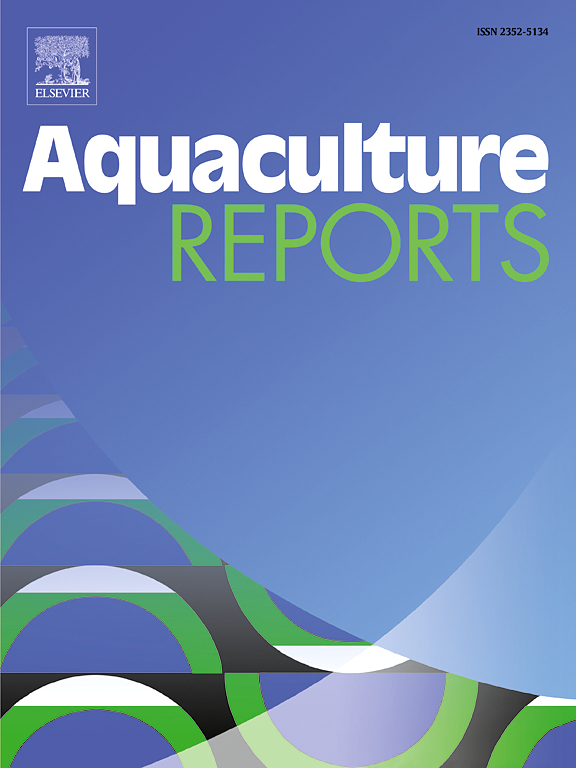LRP6 通过 Wnt/β-catenin 信号通路调节万年青的生长
IF 3.2
2区 农林科学
Q1 FISHERIES
引用次数: 0
摘要
本文章由计算机程序翻译,如有差异,请以英文原文为准。
LRP6 regulates growth in Litopenaeus vannamei via the Wnt/β-catenin signaling pathway
Low-density lipoprotein receptor-related protein 6 (LRP6) is a crucial coreceptor in the canonical Wnt/β-catenin signaling pathway, that plays a fundamental role in cell growth, development, proliferation, and apoptosis. However, little is known about its effect on growth performance in economic animal including shrimp. In this study, we characterized a homolog of LRP6 in shrimp Litopenaeus vannamei, named LvLRP6, and explored its involvement in growth regulation. Multiple sequence alignments and phylogenetic analyses indicated that LvLRP6 belongs to the invertebrate LRP6 family and has conserved phosphorylation sites with those of LRP6 in other species. Functional investigations via RNAi technology revealed that silencing LvLRP6 via dsRNA injection resulted in a significant reduction in shrimp growth, as indicated by lower weight gain than that in the control group. Mechanistic exploration revealed that LvLRP6 positively modulates the Wnt/β-catenin pathway, leading to increased expression of core components such as glycogen synthase kinase 3 (LvGSK3), β-catenin (Lvβ-catenin), and T-cell factor (LvTcf). Furthermore, LvLRP6 exerted a suppressive effect on LvMSTN (myostatin), a negative regulator of muscle-related genes, while concomitantly increasing myosin levels. Subsequent research revealed that the promoter of LvMSTN contains TCF binding motifs. Dual-luciferase reporter experiments confirmed that the overexpression of LvLRP6 or LvTcf reduced the promoter activity of LvMSTN. Additionally, LvTcf was found to induce the expression of LvLRP6 and a number of Wnt ligands, thus amplifying Wnt/β-catenin pathway activation and reinforcing the growth-promoting feedback loop. The present investigation demonstrated the importance of LRP6 in shrimp growth, which contributes to our knowledge of the molecular processes that underlie crustacean growth and offers a theoretical basis for breeding and genetic enhancement initiatives aimed at enhancing shrimp aquaculture growth performance.
求助全文
通过发布文献求助,成功后即可免费获取论文全文。
去求助
来源期刊

Aquaculture Reports
Agricultural and Biological Sciences-Animal Science and Zoology
CiteScore
5.90
自引率
8.10%
发文量
469
审稿时长
77 days
期刊介绍:
Aquaculture Reports will publish original research papers and reviews documenting outstanding science with a regional context and focus, answering the need for high quality information on novel species, systems and regions in emerging areas of aquaculture research and development, such as integrated multi-trophic aquaculture, urban aquaculture, ornamental, unfed aquaculture, offshore aquaculture and others. Papers having industry research as priority and encompassing product development research or current industry practice are encouraged.
 求助内容:
求助内容: 应助结果提醒方式:
应助结果提醒方式:


